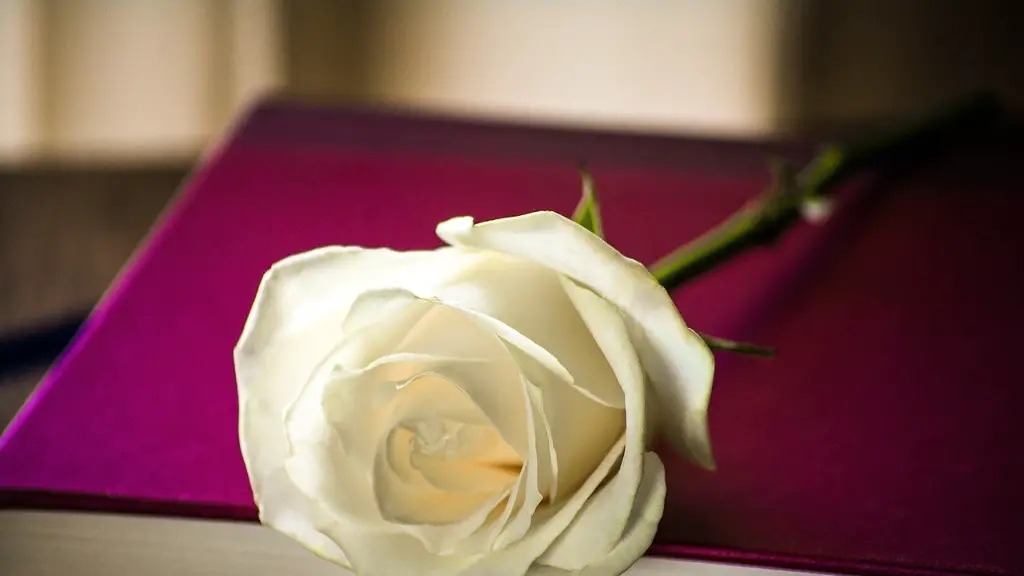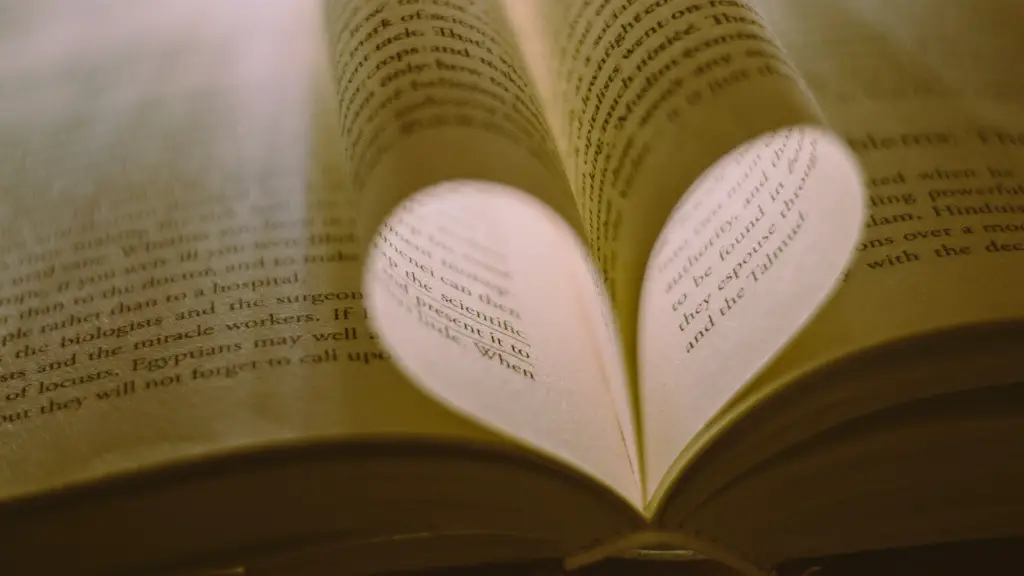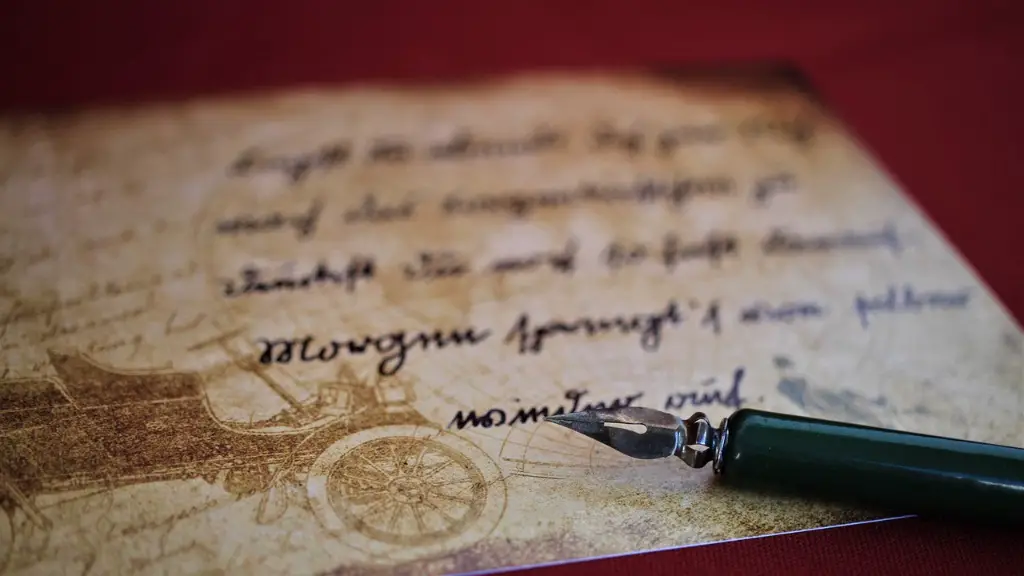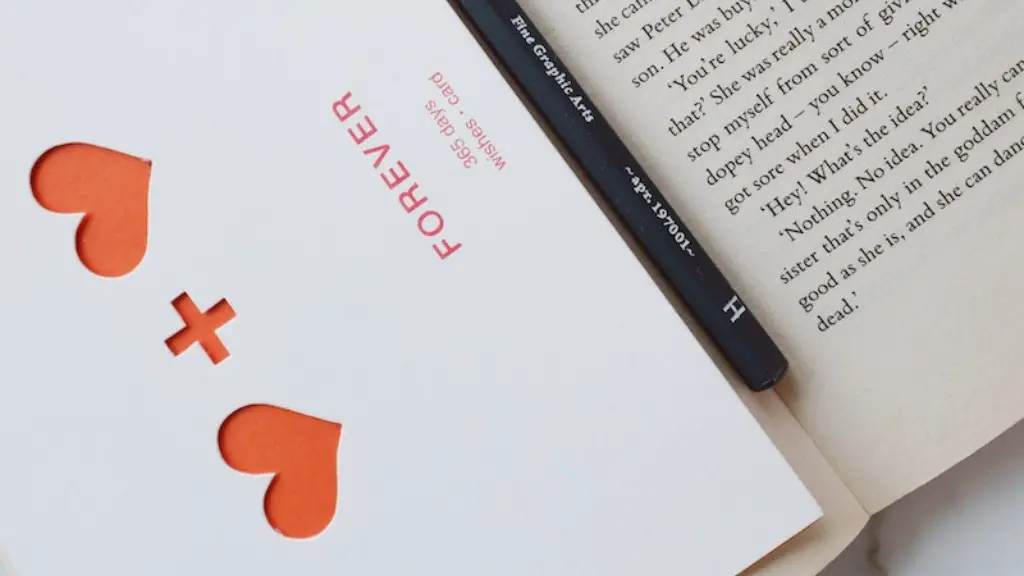Most people are familiar with the concept of rhyme, but do you know what rhyme scheme is? The concept of rhyme scheme in poetry is actually quite simple: it is the way a poem is structured in terms of the pattern of rhymes used. That is, each line of a poem is written with a particular kind of rhyme, or no rhyme at all, to form a distinct pattern. In this sense, the rhyme scheme is like a visual representation of the underlying rhythm of the poem.
The simplest type of rhyme scheme is known as a monorhyme, where every line of the poem rhymes with the same word – this is often seen in nursery rhymes, such as ‘Humpty Dumpty’. This kind of rhyme scheme may be aesthetically pleasing, but it can be rather limiting in terms of creative scope and often leads to predictability. A variety of other more complex and interesting rhyme schemes exist as well, and these provide poets with more freedom and flexibility to express their ideas through their work.
A common type of rhyme scheme is called an ABAB scheme (also known as a ballad stanza or quatrain). In an ABAB scheme, each line of the poem rhymes with the line that follows it. This is used to create structure and regularity in a poem, and it is often seen in plays, songs, and other types of literature. Additionally, it can be used to create a sense of anticipation or suspense in the reader, as they anticipate the pattern to be resolved. This form of rhyme is also used to create a sense of irony or humour, as the reader wonders how a poem which had been using this rhyme scheme will resolve itself.
Another type of rhyme scheme is known as an AABB scheme (also known as couplets), which is when two consecutive lines of a poem are rhymed. This is often used to create a balance in the poem, as the two consecutive lines contrast with each other. This can also be used to emphasise certain words or phrases in the poem, as they are emphasised by the contrast between the two lines. This type of rhyme scheme is often used to create a sense of rhythm in a poem and can be used to create a sense of suspense or humour as well.
In addition to these common types of rhyme scheme, there are a variety of other techniques which can be used to create a variety of stylistic effects in poetry. For example, there is the triple rhyme (also known as an aba rhyme scheme), which is when three consecutive lines in a poem are rhymed. This often creates a sense of surprise in the reader, as the rhyme scheme has a twist which the reader was not expecting. Additionally, there are ottava rima and Dante rhymes which are rather more complex rhyme schemes which can be used to create longer, more intricate poems.
Rhyme scheme is an important element of poetry which provides structure and aesthetic pleasure to the poem. It can be used to emphasise and contrast certain words or phrases, create suspense and humour, and express the poet’s ideas in the most creative and effective way possible. As such, it is an essential skill for any poet to master.
Use of Rhyme Scheme/Structure
Rhyme schemes are used in poetry to provide structure and aesthetic pleasure. By following a rhyme scheme, a poem becomes more organised and structured, allowing the reader to experience the full potential of the poem. Additionally, a rhyme scheme helps to emphasise certain words and phrases, contributing to the overall aesthetic effect of a poem. For example, if a poem contains a lot of repetitive rhymes, it can create a sense of rhythm which can be particularly striking and powerful.
It is important to note, however, that not all poems require the use of rhyme in order to be effective. There is a long tradition of free verse poetry which does not use a specific rhyme scheme and instead relies on other elements such as structure and imagery to express the poet’s ideas and feelings. Additionally, some poets may choose to use a very simple rhyme scheme or no rhyme scheme at all in order to create a more relaxed and free-flowing style.
Ultimately, it is up to the individual poet to decide whether or not to use a rhyme scheme in their poem, as there is no one-size-fits-all answer. Some poets may find that certain poems benefit more from a rhyme scheme, while others may find that a more simple approach works better. Regardless of the approach taken, however, it is important to remember that a poem’s success is not necessarily determined by its rhyme scheme but rather by its other elements such as imagery and structure.
Popularity of Rhyme Scheme
Rhyme schemes have been a feature of poetry for centuries and they continue to remain popular among poets today. This is due to the fact that they provide poets with structure and a way to emphasise and contrast certain ideas or words. Additionally, rhyme schemes can create a sense of rhythm, suspense or humour, making them a powerful and enjoyable tool for any poet.
The popularity of rhyme scheme can also be seen in the music industry, where many songs follow a specific rhyme scheme. This is due to the fact that a rhyme scheme can help to create a sense of rhythm and build anticipation or suspense in a song. Additionally, a rhyme scheme can help to emphasise key words or phrases in the song, allowing for greater clarity and impact.
Furthermore, rhyme schemes are becoming increasingly popular in spoken word poetry, where they are often used to emphasise certain words or ideas. This is due to the fact that rhyme schemes can help to create an energetic, engaging atmosphere which is perfect for spoken word performances. Additionally, rhyme schemes can help to give structure to a spoken word poem, allowing its ideas to be expressed in a clear and concise way.
Rhyme Scheme in Literary Analysis
When analysing a poem it is important to understand the role of the rhyme scheme. As mentioned before, it can be used to create a sense of rhythm and structure, as well as to emphasise certain words or phrases. Additionally, the rhyme scheme can help to give the poem a certain tone or mood, which can be further explored through the analysis of its other elements.
When analysing a poem it is important to consider the effect of the rhyme scheme on the poem’s overall meaning and message. For example, if a poem is written in a particular rhyme scheme, it can help to convey a certain emotion or set the tone for a poem. Additionally, the rhyme scheme may suggest certain ideas or symbolism which can be explored through further analysis.
Additionally, the rhyme scheme can help to shape the poem’s overall rhythm and flow. For example, a simple AABB rhymeScheme can help to create a gradual, measured pace in a poem, while a more complex Dante rhyme scheme can help to create unpredictability and suspense. Understanding the rhythm and flow of a poem can be a valuable tool in analysing its overall meaning and message.
Use of Rhyme Scheme in Other Forms of Literature
Aside from poetry, rhyme schemes can also be found in other forms of literature. For example, prose often employs a kind of rhyme scheme in order to create a pleasing and rhythmic flow. Additionally, rhymes have been used in plays, speeches, and even novels as a way to create a memorable or emphatic effect.
Rhyme scheme can also be used in literary analysis to help analyse other forms of literature. For example, by analysing the rhyme scheme in a play it can help to highlight certain themes or ideas which are explored in the play. Additionally, the rhyme scheme may suggest certain symbolism which can be explored in the overall analysis of the text.
Rhyme schemes can also be used in educational contexts in order to help children learn how to articulate certain ideas or concepts. By breaking down a text into its individual rhyme scheme, it can help to make the text easier to understand and, as a result, improve a child’s reading comprehension.
Conclusion
In conclusion, rhyme scheme is an important element of poetry that can be used to create structure, rhythm, and aesthetic pleasure. Additionally, it has a range of other uses, such as in musical compositions, spoken word performances, and in literary analysis. As such, it is an essential technique for any poet or wordsmith to master.




